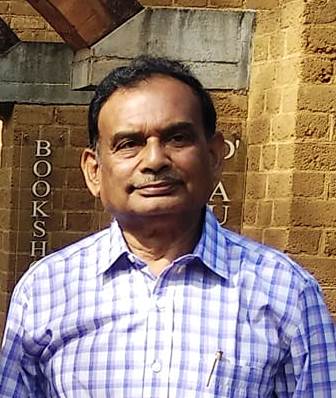The two moves look different but are not so. The consensus communique facilitates enhanced aid to Ukraine despite the opposition from the Republicans
 Shivaji Sarkar
Shivaji Sarkar

The G20 was a mega show. The success was in terms of Indian diplomacy carving out a delicate consensus on the war “in” Ukraine rather than “against”. It was carefully chalked out economic planning, where India wins the US investments, Arab and western support through the India-Middle East-Europe Economic corridor (IMEC) for robust trade relations.
It follows Ukrainian President V Zelenskyy visiting Washington, during the UN General Assembly as the US Congress debates $24 billion in military and humanitarian aid for his war-torn country as it continues to fight against Russia, though the Republicans are not in favour. Had there not been such a joint communique in New Delhi, Ukraine may not have got this largesse and Russia another 150 sanctions. It has stoked the ongoing war.

e-mail: infocom.krc@gmail.com
Know More | Apply Here
The bilateral agreement with US President Joe Biden and Prime Minister Narendra Modi in New Delhi in a way facilitates it further. In a joint statement, the two leaders reiterated their support for building resilient global semiconductor supply chains, noting in this respect a multi-year initiative of Microchip Technology Inc., to invest approximately $300 million in expanding its research and development presence in India and Advanced Micro Device’s announcement to invest $400 million in India over the next five years to expand research, development, and engineering operations in the country.
The leaders expressed satisfaction at the ongoing implementation of announcements made in June 2023 by the US companies, Micron, LAM Research, and Applied Materials. President Biden reaffirmed his support for a reformed UN Security Council with India as a permanent member, and, in this context, welcomed once again India’s candidature for the UNSC non-permanent seat in 2028-29.
The two moves look different but are not so. The consensus communique facilitates enhanced aid to Ukraine despite the opposition from the Republicans. India gains and so does the US, the support of the largest democracy. It opens up further ways for Indo-US trade, as America has surpassed China in trade relationships with India. In 2023, India and the US surpassed a record value of $128.78 billion. In 2022, the total bilateral trade between the two countries amounted to $119.42 billion. Almost half of it is Indian exports.
This changes the global scenario to quote UN Secretary General Antonio Guterres, “It is time for a compromise for a better tomorrow. If we want a future of peace and prosperity based on equity and solidarity, leaders have a special responsibility to achieve compromise in designing our common future for our common good”.
Guterres goes beyond, “I remain determined to do everything possible, to re-establish the Black Sea Initiative, the exports of Ukraine foodstuffs and also to go on, on our work in relation to the facilitation within the sanctions regime of the Russian foods and fertilizer products”.
Meanwhile, on September 14, the US announced imposing sanctions on more than 150 individuals and entities connected with Russia’s invasion of Ukraine. “With today’s sanctions, the US is continuing our relentless work to target Russia’s military supply chains and deprive Putin of the equipment, technology, and services he needs to wage his barbaric war on Ukraine,” said Secretary of the Treasury Janet L. Yellen. “Today’s actions show our global reach in imposing severe costs on Putin’s oligarchs.”
This could not mean a new world order. Though, Guterres says that the G20 has a beginning on sustainable development goals (SDG) but it has not exactly cut emissions. Now the G77 with 134 members meets at Havana, Cuba. India, while claiming to have emerged as the voice of the Global South during its G20 presidency, has decided to scale down its participation at the summit of the largest alliance of developing countries by cancelling the visit of the External Affairs Minister S Jayashankar to Cuba.
The group’s importance is especially noted in the United Nations, where it is the largest bloc of countries with a rotating presidency. India had been the first president of the G-77 in New York. China is not a member of the group, but often aligns politically with the group, so official statements at various multilateral platforms are often labelled ‘G-77 plus China’. India needs to make a note.
Post G20, the world orders are not easing, though Guterres says that is what he aims at with G77 and the “greatest G of all G193 – the High Level Week of the General Assembly.” He says a multipolar world is emerging. It can lead to escalating tensions, fragmentation and worse. Today’s multilateral institutions that were created after World War II reflect the power and economic dynamics of that and so they need reform.

5 Advantages of KRC 5E for Success MDP course, powered by KRC Foundation.
Employability training
Internship
Earn while you learn ( Work Experience Certificate, subject to selection and performance)
100% Cashback on Fees through Global Garner
KRC Membership & Placement assistance.
Send your resume to get a free profiling session and selection.
Email resume: 5eforsuccess@gmail.com
WP: 9531090090
“The only thing you can be sure is that I remain determined to do everything possible, to re-establish the Black Sea Initiative, the exports of Ukraine foodstuffs and also to go on, on our work in relation to the facilitation within the sanctions regime of the Russian foods and fertilizer products”, says Guterres. But all know his powers are compromised and he would not be able to do much.
In such a scenario, India has also to reassert itself and continue to have the balance between the US and Russia. Something not to his liking, French President Macron told newsmen in New Delhi. He wants to see Russia function.
Though Racep Tayyip Erdogan, President of Turkey, said that he was negotiating with Russian President Vladimir Putin and against the system of permanent representative — P5 — in the UN Security Council, in reply to a question to whether he supported India’s claim to the Security Council. Nor did he approve the India-Middle East-Europe Corridor till Turkey was a part of it. Could there be a route correction?
How is India doing for its own economy? It has 7.8 percent GDP growth in the first quarter. That is not the real growth. The story told by the nominal numbers, however, is very different. The nominal figures track the real numbers until the first half of FY23, but then decline by a whopping 14 percentage points over the past three quarters. This is a narrative of an economy which has decelerated sharply to very modest levels also with lower investments.
The national income accounts suggests that after a strong recovery from the pandemic, there has been a significant ebbing of dynamism over the last three quarters to more modest levels recently. This suggests that with high debt and even G20 push, policy makers do not have the comfort of being complacent. They have to chart out the path for rapid growth.—INFA


